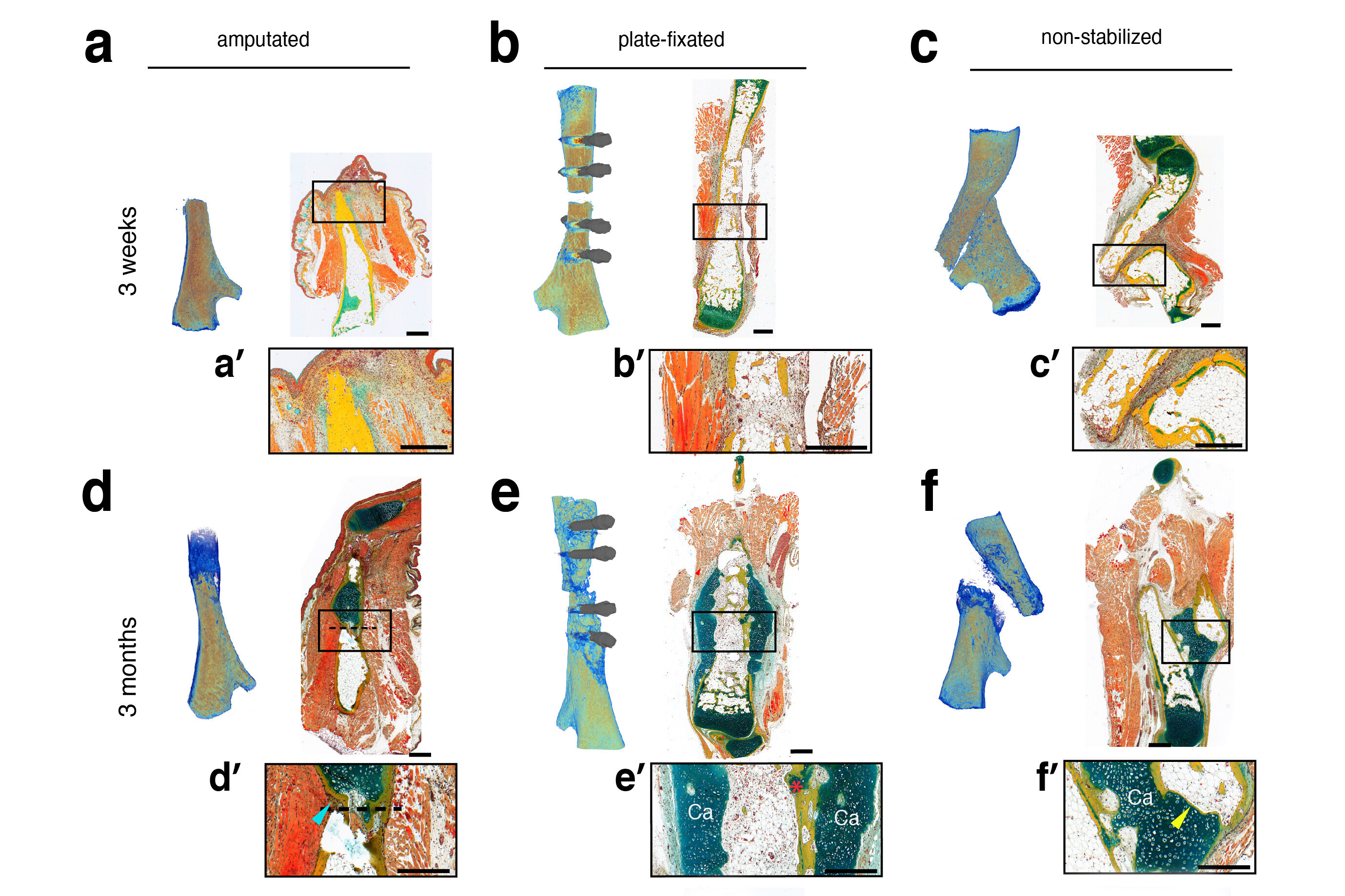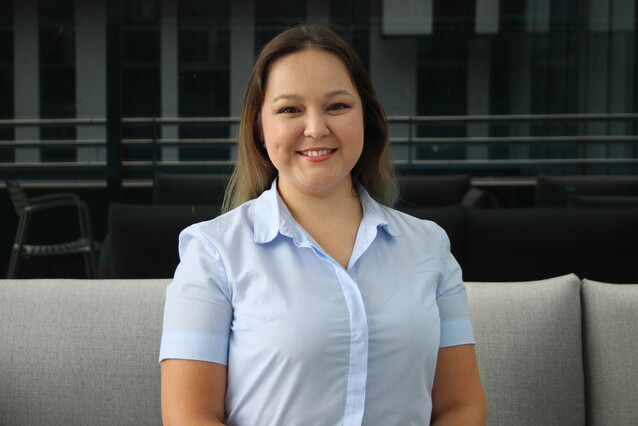The axolotl, a new model to improve the healing of broken bones
Although bone fractures rank high amongst the most frequent traumatic injuries, treating and healing large fractures remains a medical challenge: bone fragments can misalign and join improperly, leading to further complications. While bone healing is usually studied in mammalian models, the labs of Elly Tanaka at the IMP and Katharina Schmidt-Bleek at Charité-Universitätsmedizin Berlin have developed a fracture model in the axolotl. This model allows the scientists to compare bone fracture healing to the process of bone regeneration after an amputation. Anastasia Polikarpova, postdoc and co-first author of the study, explains her research, now published in NPJ Regenerative Medicine.
People break bones all the time - what is left to know about bone fracture healing?
Bone fractures are indeed extremely common injuries in the clinic, and they’re bound to become even more common with our ageing populations and the increasing prevalence of bone cancer and osteoporosis. Healing large fractures is still very complicated, whether they occur by accident or are surgically created, for example to remove a bone tumour. There are a few ways to promote healing, but none of them leads to a perfect healing outcome. Invasive surgical interventions or aggressive drug treatments are usually necessary, with possible severe side-effects.
So far, what kind of models have researchers used to improve our knowledge of fracture healing?
Scientists have used mice, rats, rabbits, dogs, and sheep, mostly. The first three are practical models because they are easy to keep in the lab, but the last two have bones that are more comparable to ours in structure and that carry a similar weight.
Why bring a new, amphibian model to bone fracture research?
Like other models of bone fracture, the axolotl is unable to heal large fractures properly. However, the advantage of this species is that it can fully regenerate a limb after it’s been amputated, including the bone. As a result, we can compare the process of bone regeneration after amputation to fracture healing, within the same species. This is impossible in mammals, because they can’t regenerate a lost limb.
What does the comparison between limb regeneration and fracture healing bring to the table?
We’re characterising the cellular and molecular pathways that are essential for each of these processes and looking for the common denominators and differences. Agnes Ellinghaus and I worked on this paper to make the first steps to that end: creating a fracture model in axolotl that is comparable to mammalian models and describing it in detail.
What is that model like?
We used a titanium plate fixated on the bone to stabilise the fragments and align them. These plates not only resemble the ones that are used in human treatments, but also maintain a standardised fracture gap size that makes our experiments easier to control. In our study, we used an example of small fracture healing, but in theory we can use this model for different fracture sizes. We noticed that bone fragments that aren’t aligned with a plate shift as they grow back, reconnecting in a messy manner, sometimes overlapping. The plate accelerates and improves the healing process.

How does the axolotl differ from usual models?
Bone healing takes a lot longer in the axolotl, possibly because the cells divide more slowly, or because it’s an aquatic animal and has no strong mechanical load on its legs – axolotls swim mostly with their tail, while their legs are only used to maintain their posture. We also know from the scientific literature that axolotl bone marrow has fewer progenitor cells than mice do, which could slow down the regrowth of bone tissue.
What are the next steps in your research of bone fracture healing?
The drawback of this model is that we need to wait for axolotls to reach a large size to be comparable to mice – this takes time. I will shift my attention to smaller axolotls and compare the bone healing process to limb regeneration in those. The goal here will be to understand why axolotls can regrow a full limb, but not heal a large fracture. I hope this might take us closer to developing therapies for humans suffering from large fractures.
Original publication
Anastasia Polikarpova*, Agnes Ellinghaus*, Oskar Schmidt-Bleek, Lidia Grosser, Christian H. Bucher, Georg N. Duda, Elly M. Tanaka & Katharina Schmidt-Bleek: “The specialist in regeneration—the Axolotl—a suitable model to study bone healing?”. npj Regenerative Medicine (2022). DOI: 10.1038/s41536-022-00229-4
*These authors contributed equally to the study.
Further reading
Tracking cells in the regenerating limb through space and time
Undergraduate student fits one more piece to the regeneration puzzle
